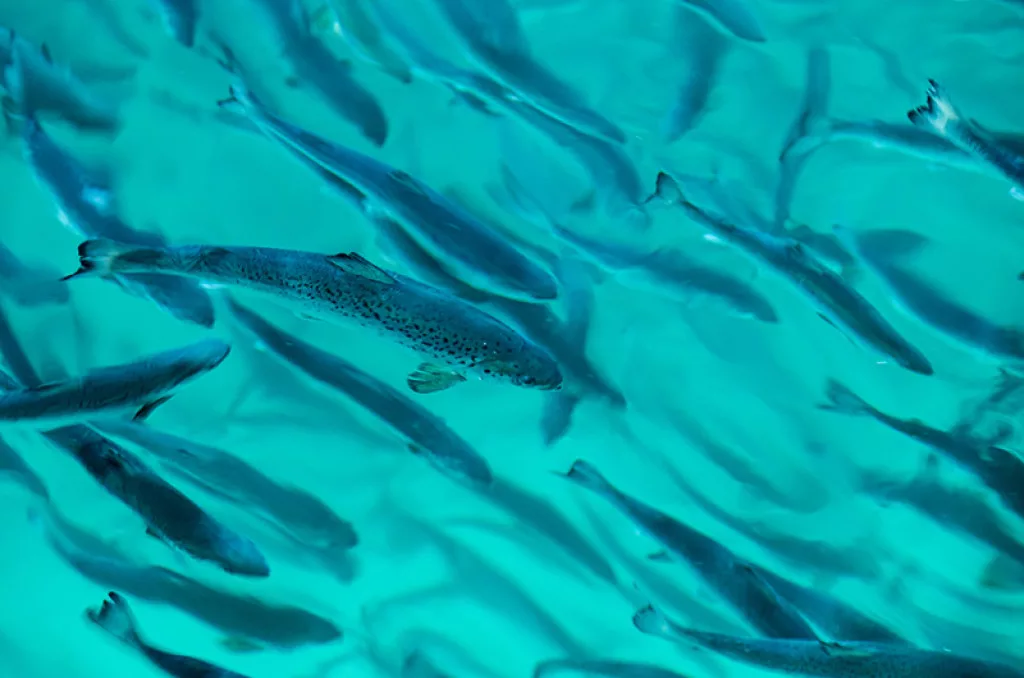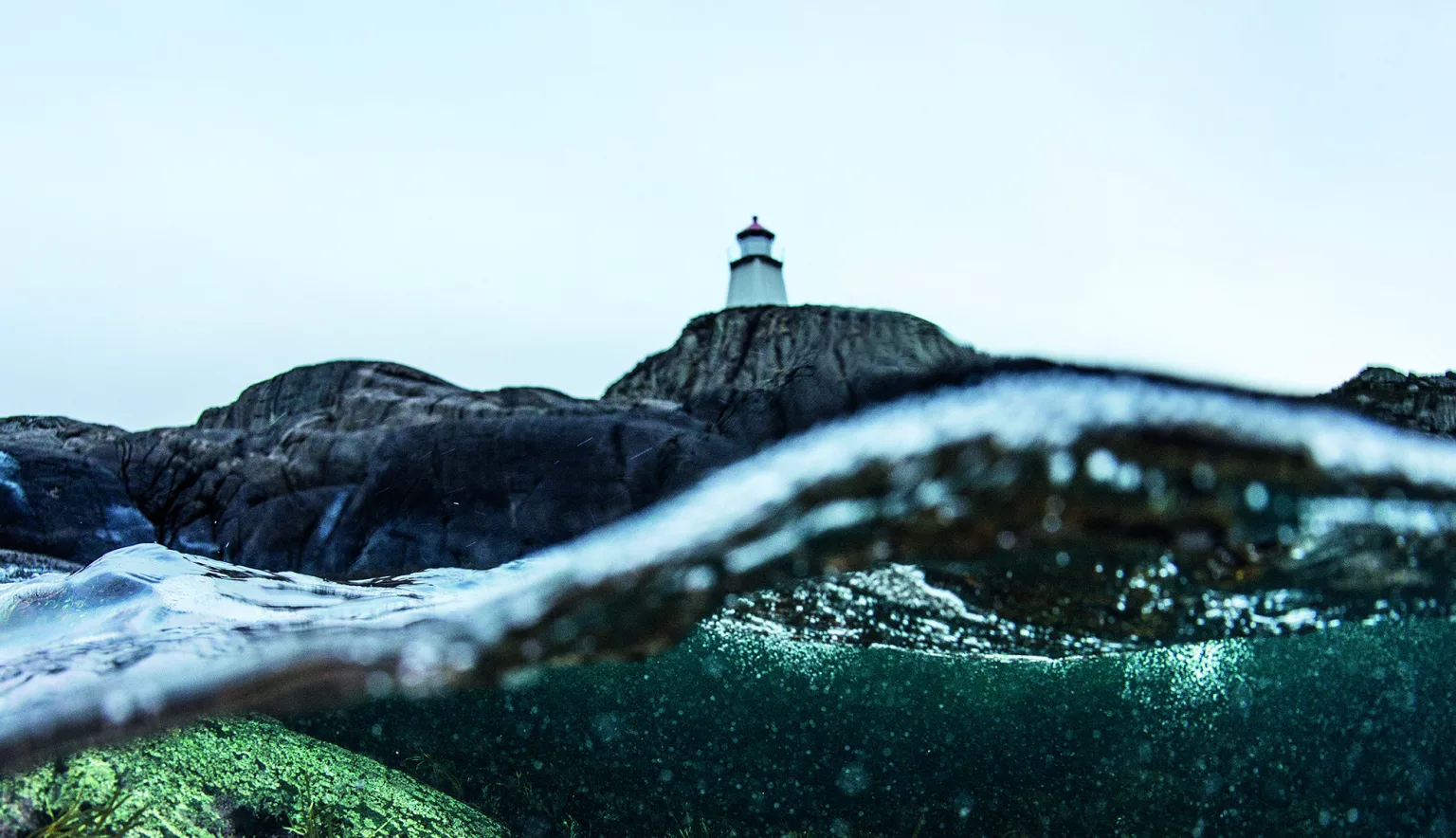Salmon Evolution is the Norwegian player at the forefront of sustainable salmon farming. We speak to CEO Trond Håkon Schaug-Pettersen about the company’s chosen hybrid flow-through technology, and its production plans moving forward.
EXTENDING OCEAN POTENTIAL
Sustainable food sources are the key to feeding a rising global population while maximising efficiency and maintaining environmental goals, a trio of factors that balance the demands of people and the planet.
Salmon Evolution aims to be one such company. A Norwegian land-based salmon farming business founded in 2017 by a group of visionary pioneers with vast experience in the seafood industry, Salmon Evolution was established with the goal of becoming a beacon for sustainable salmon farming. Using innovative technology, Salmon Evolution is extending the ocean’s potential by transferring the best conditions offered by the sea to farm salmon on land, in a more sustainable way. The company is currently targeting a production capacity of 100,000 tonnes of head on gutted (HOG) salmon by 2032.
Through the company’s chosen hybrid flow-through (HFS) technology, which combines the benefits of both traditional and land-based aquaculture, Salmon Evolution is solving several traditional farming issues. With controlled and optimal growth conditions the company is eliminating the challenges associated with conventional sea-based farming, such as sea lice, escapes, reducing mortality and emissions, and feed loss.
“We are becoming a part of the solution in providing the world’s growing population with more protein while reducing the impact on our shared planet,” introduces CEO Trond Håkon Schaug-Pettersen. “We are highly engaged in our mission to extend the ocean’s potential through innovative and sustainable means.”
Salmon Evolution has been listed on the main list of the Oslo Stock Exchange since 2021, and has subsequently continued to grow. The company started construction in May 2020 and has almost completed Phase 1 of its long-term development plan.
Today, Salmon Evolution numbers around 60 employees, all of whom are dedicated to achieving its progressive business and global goals.
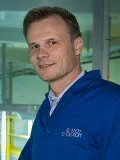
“Salmon Evolution represents a step change in salmon farming”
Trond Håkon Schaug-Pettersen, CEO, Salmon Evolution
FARMING BY THE NORTH SEA
Salmon Evolution’s first production facility is strategically located at Indre Harøy on the Norwegian west coast, which boasts unlimited access to fresh seawater, renewable energy, established infrastructure, and an educated and experienced workforce. Phase 1 is already in operation, and the company is seeing an annual capacity of 7,900 tonnes of HOG salmon at a steady rate. Fully developed, the Indre Harøy facility will have an annual capacity of 31,500 tonnes of HOG salmon.
According to Schaug-Pettersen, the production facility was previously an abandoned quarry, and so adapting the area to suit the needs of the business has kept intrusion into nature at a minimum.
“The site had unlimited access to clean and fresh seawater, adequate electricity supplies, deepwater quays and opportunities for expansion and growth,” he details. “In addition, it was optimally positioned in terms of distance for produce to reach the market. The location for land-based farming was perfect; we have transformed an undeveloped land zone into a new and modern industrial adventure.”
Salmon Evolution has an agreement for slaughter services with Vikenco AS (Vikenco), one of the leading salmon processors in Norway, located only 10 kilometres (km) from the production site in Indre Harøy. Due to this proximity, there is no need to invest in subscale processing operations as Salmon Evolution’s partnership with Vikenco provides the company with a comprehensive product portfolio, full product flexibility, HOG, fillets, and portions divided into two main categories – fresh and frozen products. This gives Salmon Evolution an industrial cost level from day one.
OCEAN TO EARTH
Sustainability and innovation are two aspects of business that lay at the heart of Salmon Evolution, both of which are encapsulated by HFS technology central to the company’s farming practices. HFS represents the most suitable technology to utilise on-site, especially alongside the optimal water conditions available along the Norwegian coast and in Salmon Evolution’s other locations worldwide.
“Our emphasis has been on creating the most natural possible environment for the salmon while avoiding the challenges we find in the sea, such as lice and disease,” Schaug-Pettersen says. “We have put biology first in everything we do because we want to create an environment where the salmon not only survives, but also thrives. This ensures better biology, quality, fish health and welfare, improved sustainability and, in the end, long-term profitability.”
The system itself takes in 30 to 35 percent cold and fresh water at any given time, helping to maintain fish welfare and provide control of the production environment, while the company also reuses approximately 65 to 70 percent of the water to save energy and control overall temperature. Intakes at two different water depths also provide Salmon Evolution with opportunities to optimise temperature and heating requirements.
“Each production tank is structured as a separate biological zone to reduce operational and biological risk, and wastewater treatment and sludge recycling will minimise the environmental footprint,” Schaug-Pettersen adds. “Waste and feed residues from production are collected and used as raw material for producing biogas or fertiliser, thereby ensuring that the whole project contributes to a circular economy.”
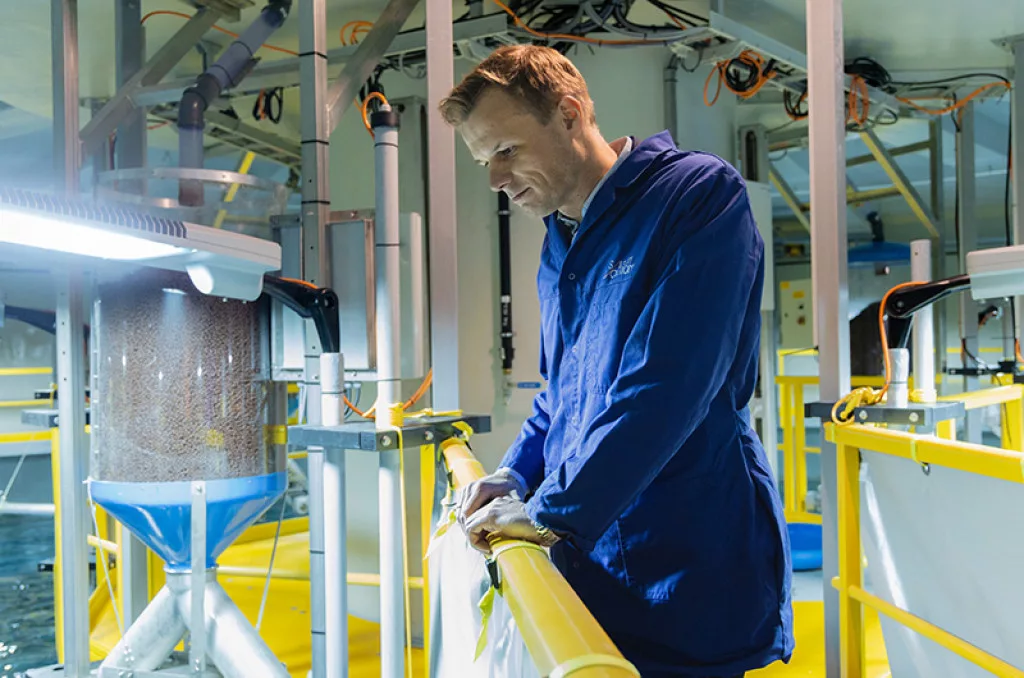
SETTING A NEW STANDARD
The Indre Harøy facility will be one of Europe’s largest fish farms on land, as it has been designed for a total annual production capacity of 31,500 tonnes of HOG salmon from its completion set for 2028. This production capacity is comparable to 10 to 15 conventional salmon farms (covering an extensive geographical area), yet the Indre Harøy location only covers around 100,000 square metres, a substantial reduction in land usage furthering the company’s sustainability-centric goals.
“We will provide around 150 million salmon portions a year for the world’s population from our flagship facility in Norway,” Schaug-Pettersen elaborates. “It is being developed in three phases, with Phase 1 providing an annual production capacity of 7,900 tonnes of HOG salmon from late 2023. Phase 2 will add another 7,900 tonnes, with construction planned to start this year. The final phase, Phase 3, will take total production to 31,500 tonnes.
“Salmon Evolution represents a step change in salmon farming. Raising our salmon on land gives us a unique opportunity to optimise the environment so the salmon thrive and live a happy life. This results in quality the world has never seen before.”
“Our salmon thrives better, grows better and tastes better- it’s a new standard of salmon”
Trond Håkon Schaug-Pettersen, CEO, Salmon Evolution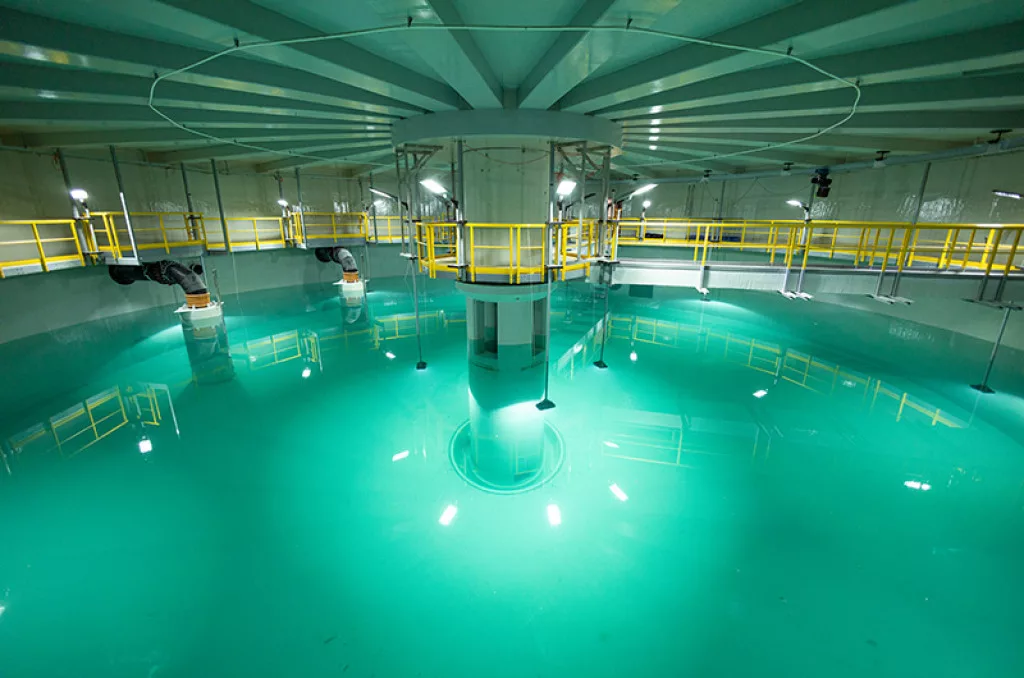
GREEN GLOBAL GOALS
For Salmon Evolution, operations are intended to stretch from east to west. The company has entered into a joint venture with seafood giant Dongwon Industries where the parties will develop, construct and operate a land-based salmon farming facility in South Korea with an annual production capacity of 16,800 tonnes of HOG salmon, using Salmon Evolution’s chosen HFS technology.
On top of this, the company has also initiated a process with the aim of establishing a land-based salmon farming operation in North America. However, despite this, salmon farming can only be undertaken in specific geographical areas around the world.
“We cannot operate everywhere – we need access to waters of a certain temperature,” Schaug-Pettersen reveals. “There are places where we cannot apply this concept, but there are still a lot of locations that have the right conditions, enabling us to provide the salmon with an excellent living environment.
“We are already utilising our knowledge and experience in South Korea via our joint venture with Dongwon Industries. Together we will develop, construct, and operate a land-based salmon farming facility. As we go international, we will always do so enabled by our flagship operation at Indre Harøy. Here we are going to have the best land-based salmon farming facility in the world, in the middle of the aquaculture cluster in Norway with access to people, suppliers, competence and the full value chain.”
Through the utilisation of technology, competence, and experience from domestic projects, Salmon Evolution aims to develop projects in targeted growth markets in collaboration with local partners. The company has a clear road map towards 100,000 tonnes of production capacity by 2032, and is on track for around 25,000 tonnes of capacity by 2024.
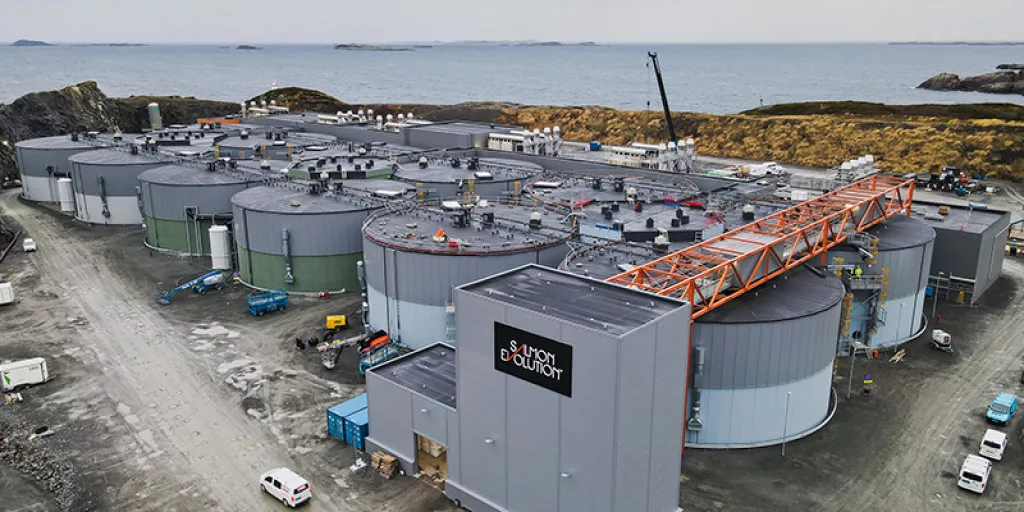
OPPORTUNITIES ABROAD
Norway has been a leader in providing the world with premium salmon for many decades. Since then, salmon – or in fact Norwegian salmon – has become the world’s most popular fish. With its long coastline and stable, cold temperatures, the country makes for the perfect natural salmon farming conditions, and currently, about half of all farmed salmon comes from Norway.
Norway already has an advantageous starting point with its long and proud traditions of living by and off the sea, with perfect natural conditions for salmon farming. Cold, clear waters in the fjords along its long coastline form an ideal environment where salmon thrive, and that is why Salmon Evolution is building its flagship facility in Norway, the pinnacle of salmon farming knowledge and expertise.
“Salmon of Norwegian origin is also the most preferred among consumers, and the only origin which seems to be increasing in popularity year on year,” Schaug-Pettersen affirms.
“As we see it, there is now a window of opportunity with very limited land-based competition in both Europe and abroad for the foreseeable future, and Salmon Evolution aims to be the market leader in the development of land-based salmon farming globally.
With the strong platform we have at Indre Harøy, we are confident that we are in a unique position to do so.
“We have done some consumer insight and what we see is that there is a high awareness of land-based salmon as an environmentally friendly and sustainable solution. We see a fantastic opportunity now for our land-based salmon as the market is looking for new categories, and we believe there is an open position in the market to build a new concept that really emphasises both quality and sustainability.”
The company’s first harvest has confirmed good fish health and fillet quality, firm meat texture, a vibrant and consistent red meat colour, and of course, excellent taste.
“Because we make no compromises on water quality, fish welfare or environmental responsibility, our salmon thrives better, grows better and tastes better – it’s a new standard of salmon.”
